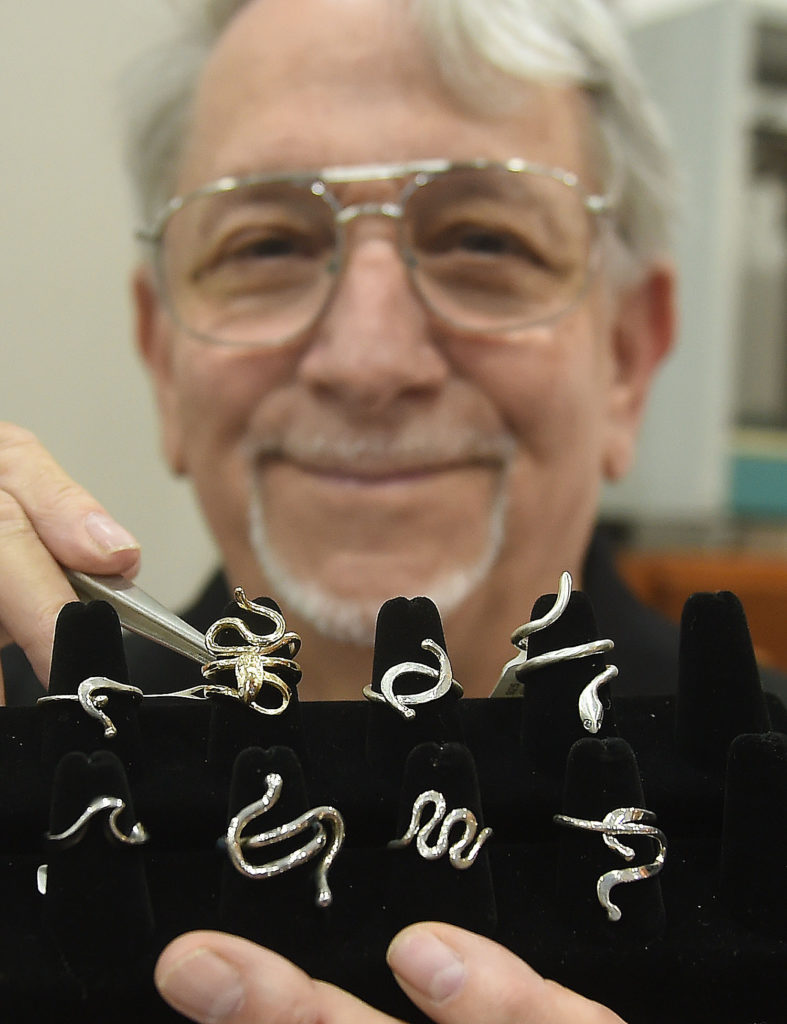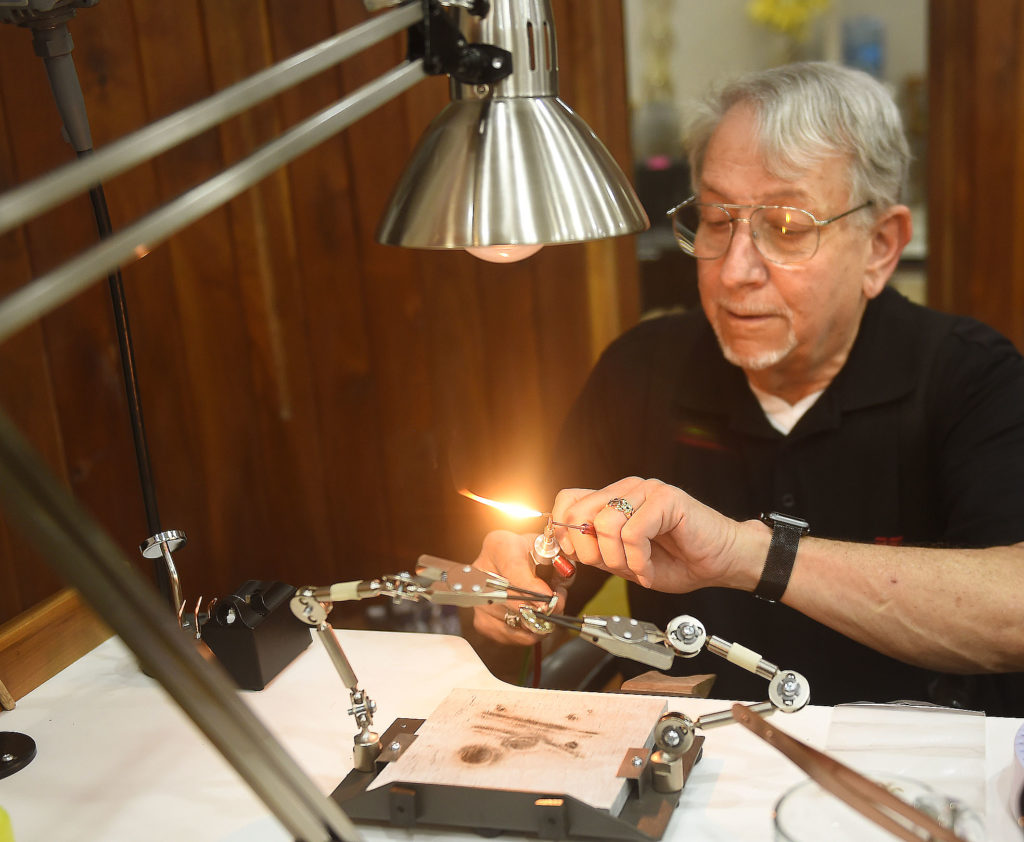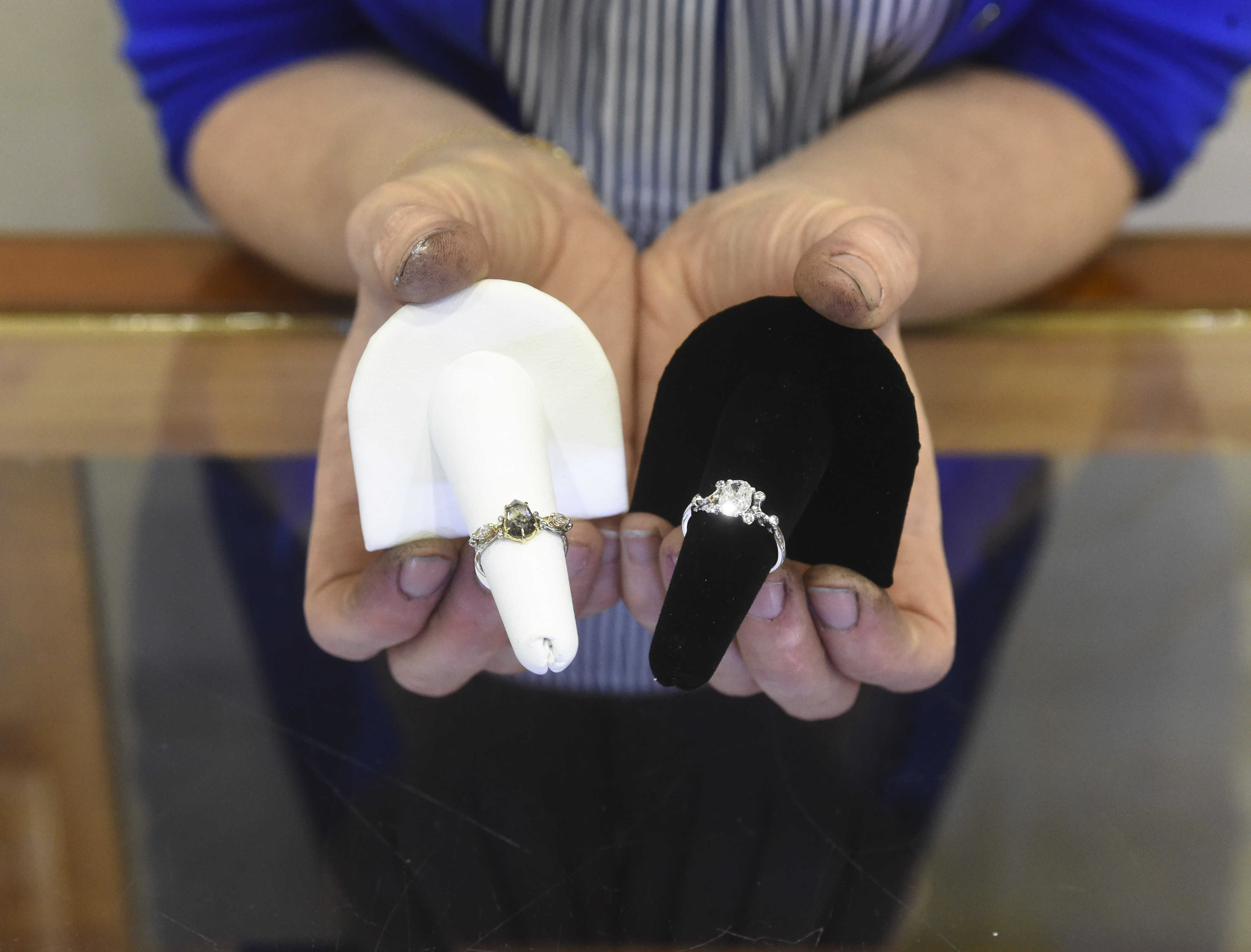Engagement rings have shifted from their traditional white diamond look, according to some local jewelry stores. Spencer & Kuehn Fine Jewelry Studio, at 320 High St., said that the current trend focuses a lot more on customization.
With its catchphrase “Embrace Unique,” the studio specializes in creating each customer’s vision for the perfect piece of jewelry, including engagement rings. “
There is a trend toward people looking for something that will stand the test of time but it’s not the traditional, sparkly white diamond,” Katherine Spencer, co-owner of Spencer & Kuehn, said. “With everything being so mass-produced and disposable, people want something they know is theirs.”
Spencer said that in addition to the shift in age group, there has also been a shift in the independence of women and what they want in an engagement ring.
“With women … being more independent people as a whole today, it just lends itself toward having more of a say in something that you’re going to be wearing [for the rest of your life],” Spencer said.
When considering a custom design, there are a few important questions to ask: What does your lifestyle look like? Do you see yourself wearing the ring every day? Do you see yourself wearing an engagement ring at all a couple decades from now?
Two trends that are the most popular, Spencer said, are halo style — which features a ring of stones, often diamonds, encircling a solitaire; and fully customized, one-of-a-kind works, for which the customer selects everything from the metal, the setting, the stones, the cut and the design.

Tom Licciardi, owner of Jacqueline’s Fine Jewelry, said he, too, has seen an increase in the demand for customized styles, which he provides at his Morgantown and Uniontown, Pa., stores, though white diamonds remain most popular.
“Ninety-five percent of the time it is the traditional white diamond,” Licciardi said. “I don’t think the diamond’s going to be replaced as a centerpiece — I think that is here to stay. But the custom design aspect of it is definitely growing at a fast pace.”

John Kuehn, co-owner of Spencer & Kuehn, said he believes the shift from traditional engagement rings has occurred due to the shift in the traditional perception of marriage with those under 30.
“Marriage is a new thing nowadays,” Kuehn said. “Marriage is not traditional.”
To accommodate changing attitudes toward engagements and weddings, Kuehn said, Spencer & Kuehn is now creating a special type of ring that fits the current times, called a commitment ring. Kuehn said that in today’s age, couples want something to signify their devotion, without implying traditional values. To that end, he and Spencer have designed a new, original take on the wedding set.
The women’s ring features a halo design using white diamonds accented with a single sapphire, but no solitaire in the center — it remains open. The men’s style features a design similar to a signet ring, with a small sapphire at the corner. By matching slightly, the set signifies a promise to each other, without the traditional trappings of commitment, Kuehn and Spencer explained.
Spencer said another trend she sees is customers wanting to repurpose older pieces of jewelry to make something new and unique. Much of the studio’s custom work involves using heirloom and antique pieces, as well as items the customer already owns but rarely wears. It’s all about sustainability, and that trend applies to diamonds, too, she said.
A lot of people are looking for a more eco-friendly, ethical option when it comes to their jewelry. Thanks in part to pop culture and politically active performers, today’s ring shoppers are more conscious of the origins of diamonds and metal. A growing number of couples seek conflict-free diamonds, ethically mined, with no connection to terror or opposition groups. There has also been a rise in awareness of the environmental effects of their extraction.
Irresponsible mining practices often result in stagnant water in open pits, creating a breeding ground for diseases. Dust blasted out of mines pollutes nearby water sources, and the destruction of habitats leads to decreased biodiversity. Spencer said the Kimberly System is helping customers feel better about their diamond choices.
Since 2003, the Kimberly System allows a new method of approving diamonds that are rough or uncut, that come into the United States, to ensure they are ethically sourced. According to the Kimberly System’s website, the mission is to prevent the flow of “conflict diamonds,” and to “protect legitimate trade in rough diamonds.”
And some couples opt out of the system entirely, buying lab-created diamonds, though Spencer said many people are still unaware of the option. Synthetic diamonds have been around since 1954. Technology has improved over time, making lab-created diamonds identical to their mined counterparts. The preferred process today (chemical vapor deposition) grows carbon atoms from a tiny diamond seed that’s kept under extreme heat and pressure for several days. The resulting stone generally costs 30% less.

Speaking of cost — what about that old three-months’-salary rule? Is that still a thing? Spencer said the price range on an engagement ring varies with the studio’s “full range of clientele.” It’s really as individual as the person. But that rule, which stems from a 1930s marketing maneuver by the De Beers diamond cartel, has grown outdated.
According to a New York Times poll this year, most people spend two weeks’ pay on a ring, or between $500 and $3,000. A one-karat brilliant-cut diamond of good quality will easily run $3,000 to $4,000. Choose an alternative stone and the price comes down: A black or gray diamond of the same size and quality might go for less than $1,000.
In today’s market, many customers choose to forget diamonds altogether and expand their selections. Sapphires and rubies are a good pick for durability. Opals, pearls, and morganite (a pink-colored stone that’s a variety of beryl) have a refined look, but steer away from them if you lead an active lifestyle; they’re softer and more easily scratched.
The same is true of bands — there are a variety of metals, settings and styles to choose from.
Go with an independent jeweler and you stand to save. Not to mention have a ring you can really call your own. Kuehn said that the business is going to continue to change with the trends, which are bound to evolve over time. Custom work will remain a hot ticket, he said — and likely grow even more popular.
The Associated Press contributed to this story.




